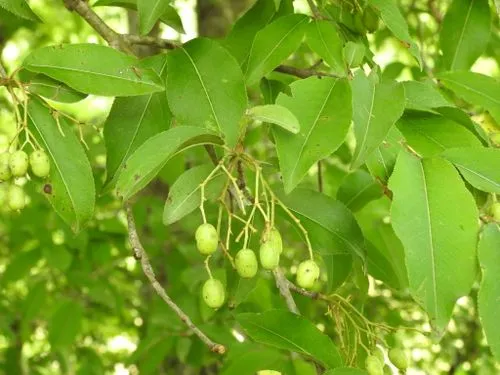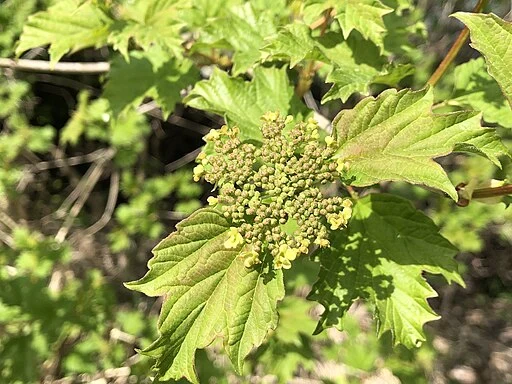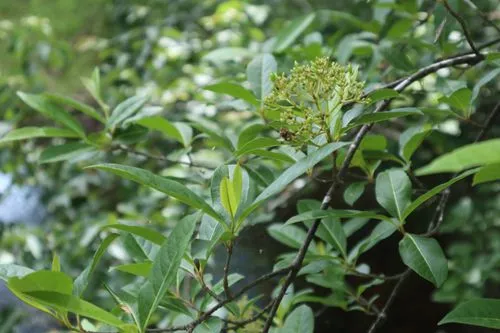Table of Contents for Canada Goldenrod (Solidago canadensis)
Canada Goldenrod (Solidago canadensis) is a herbaceous perennial that is found in the northern tier of the United States and the eastern part of Canada. This plant is an important nectar source for many insects in the fall including the Monarch butterfly. It can grow up to 6 feet tall and has lanceolate to linear-shaped leaves that can be nearly entire to toothed. The golden yellow flowers bloom from August to October and it is hardy in zones 3-9. In the northeastern United States, this species is ubiquitous along the roadsides in the fall.
Taxonomy and Naming of Canada Goldenrod (Solidago canadensis)
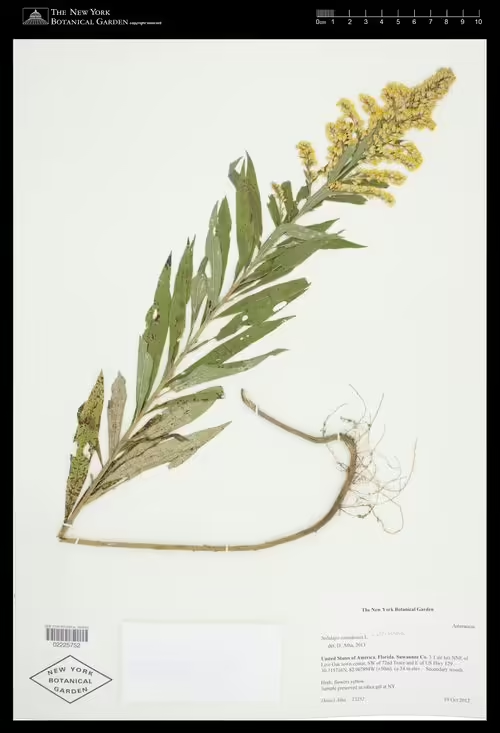
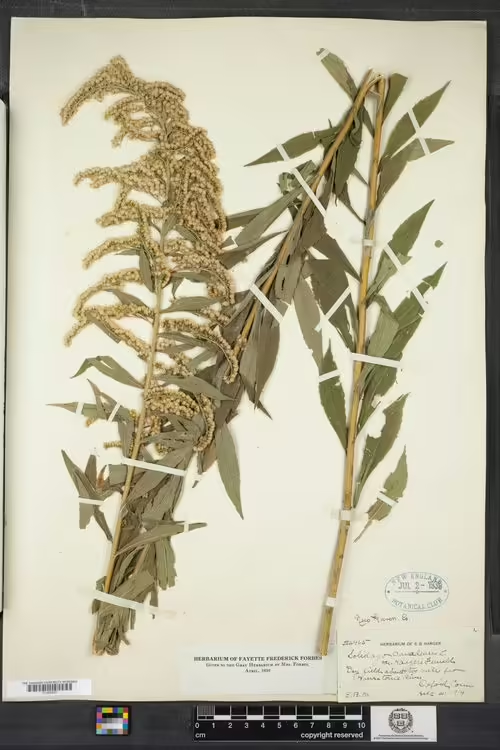
Taxonomy
Canada Goldenrod (Solidago canadensis) was named and described by Carl Linnaeus in Species Plantarum (1753) based on a specimen from the Chelsea Physic Garden (GBIF). The plant here likely came from Canada on the North American continent. This species has kept the same name since. Later in 1915, Merritt Lyndon Fernald, an American botanist, named var. hargeri or Harger’s goldenrod. This description is based on a specimen collected near Southbury, Connecticut (GBIF). This plant is a member of the Aster Family (Asteraceae).
This species has numerous synonyms from taxa that have been proposed throughout the years. They would be too numerous to list here, but a list can be found at the website for the Global Biodiversity Information Facility.
Varieties
Canada Goldenrod has two varieties, Solidago canadensis var. canadensis and S. canadensis var. hargeri. Variety canadensis is pubescent only on the leaf veins and on the upper half of the stem, while var. hargeri is pubescent between and on the leaf veins and on the entirety of the stem.
Meaning of the Scientific and Common Names
Scientific Name
The genus name, Solidago, derives from the Latin words, Solidus and ago, which together mean to make (ago) whole (Solidus). This derives from the medicinal uses of the plant. The species name, canadensis, refers to the origin of where the plant was natively located (Missouri Botanical Garden).
Common Name and Alternative Names
The common name refers to the Canadian origin of the species. Some alternative names are shortened forms or derivations of the recognized name and include common goldenrod, goldenrod, and Canadian goldenrod. Others refer to the habitat such as meadow goldenrod or its height with tall goldenrod. One website in the United Kingdom called it, shorthair goldenrod, apparently in reference to the short pubescence of the stem (Plants for a Future – PFAF).
Physical Description of Canada Goldenrod (Solidago canadensis)
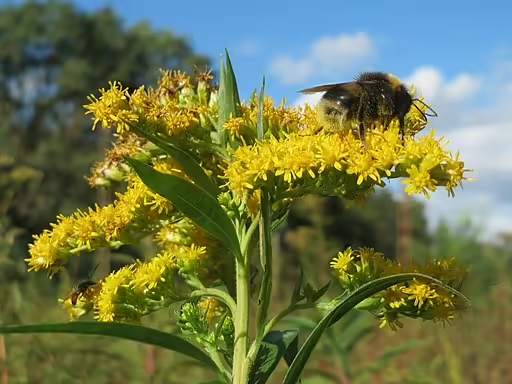
Description
- Plant Type: Herbaceous perennial
- Height: 2 to 6 feet tall
- Leaves: alternate, simple, entire to toothed, lanceolate-linear leaves that are 3-6 inches in length and 1-3 inches in width.
- Stem: lower to mid-stem glabrous or sparsely pubescent (var. canadensis), lower to mid-stem pubescent (var. hargeri) – (Weakley 2022)
- Flower color: golden yellow
- Blooming period: July to October
- Fruiting type and period: achene — October to November
Range of Canada Goldenrod in the United States and Canada
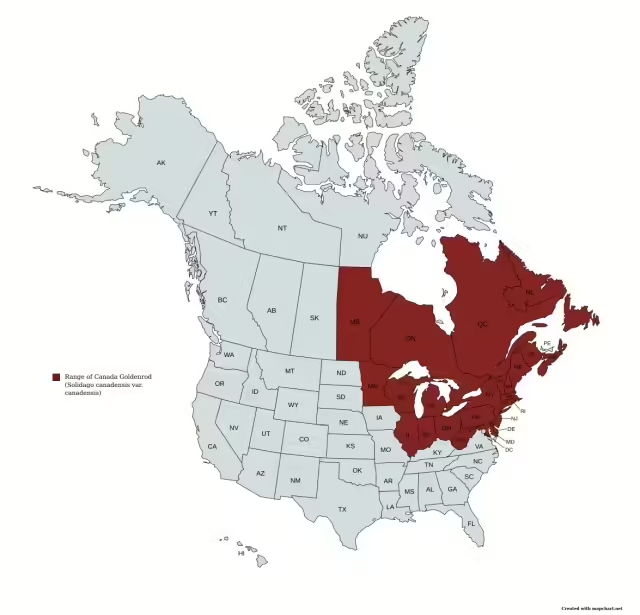
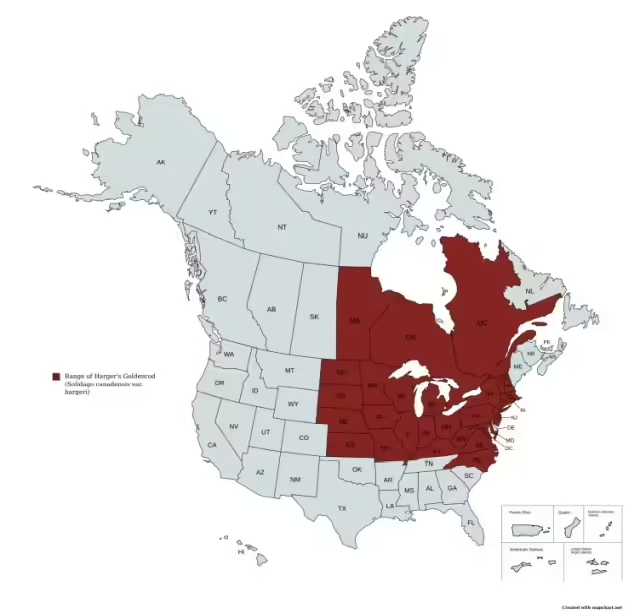
Habitat
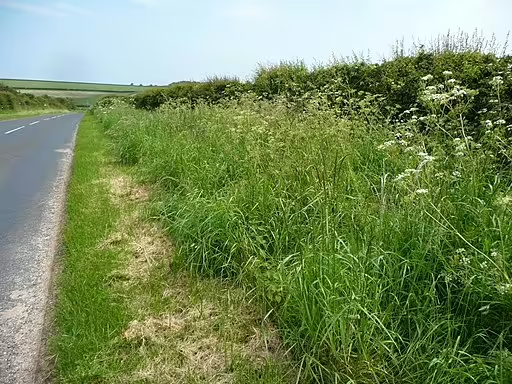
Both varieties of this goldenrod can grow on dry to moist soil in open areas. It has a preference for disturbed areas and is one of the first plants to populate these areas. These areas include roadsides, railroads, fields, and other open areas.
Hosted Insects
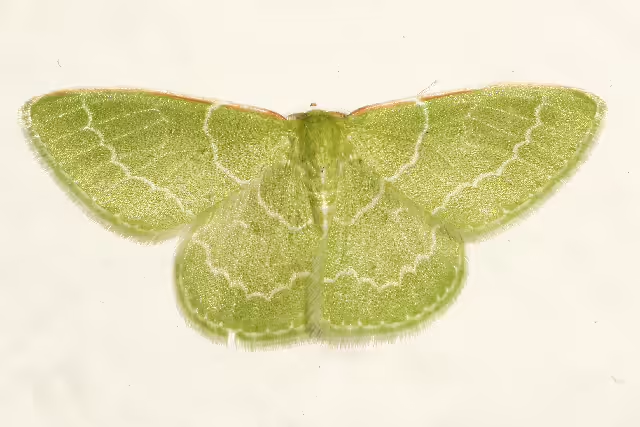
This goldenrod supports two moths, the Wavy-lined Emerald (Synchlora aerata) and Glenn’s Plume Moth (Hellinsia glenni) (Cashatt 1972), a fruit fly (Procecidochares atra) (Philips and Smith 1998), and leaf beetles (Trirhabda spp. and Exema spp.) (Cappuccino and Price 1995).
Other Supported Wildlife
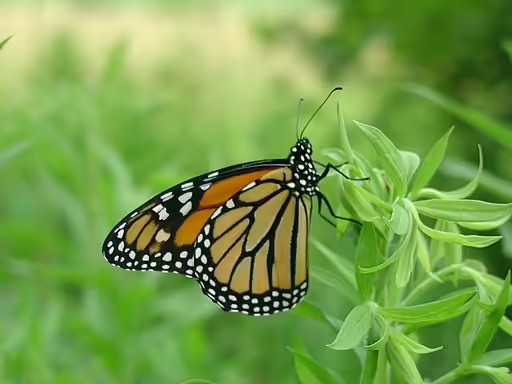
Most goldenrods are major sources of nectar for a lot of insects in the fall. This goldenrod is no different. Insects that are helped the most include paper wasps and bumblebees, but butterflies are also frequent visitors including Monarch butterflies. Some mammals, such as white-tail deer, browse the vegetation, which has been noticed in the McMullen House Bed & Breakfast garden. Birds will eat the seeds in the late fall.
Frequently Asked Questions about Canada Goldenrod (Solidago canadensis)
Is it considered to be invasive?
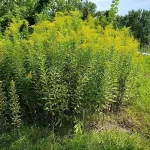
While not considered to be invasive in the United States or Canada it does have some invasive characteristics in good soils. The plants spread by rhizomes and form thick patches and tend to take over if not controlled. In other parts of the world such as Europe (c. 1645) and China (c. 1930), where this plant has been introduced as an ornamental plant, it is considered to be invasive (NRCS). In fact it is considered to be one of the most successful invasive plants in Europe and could be due to the use of allelopathy (Abhilasha, Dipti, et al. 2008). It has also been introduced in China and is probably as invasive there.
Image credit: William Coville, CC BY-SA 4.0, via Wikimedia Commons
Is it considered toxic to humans or pets?
This goldenrod is not considered to be toxic for humans or animals.
Does it have any uses other than in gardens?
Canada goldenrod has been used as a food, and a medicine in Native American culture. Medical uses include analgesics, gastrointestinal problems, and as a sedative. In all there are 29 documented uses according to the Native American Ethnobotany Database. Other than Native Americans, this plant has noted to be used in the treatment of diabetes (Watson and Preedy 2013). It has also been used as an essential oil to control some plant diseases (Preedy and Watson 2020). Goldenrods naturally contain rubber and Thomas Edison looked at producing rubber from them. Henry Ford gave Edison a Model T with tires made from goldenrod rubber (Wikipedia). Dyes have also been made from Canada goldenrod.
What other goldenrods are similar to Canada goldenrod or could be confused with it?
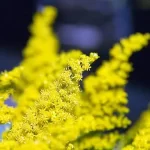
This goldenrod (Solidago canadensis) is most closely related to the tall goldenrod (Solidago altissima) and the giant goldenrod (Solidago gigantea), which can also be called tall goldenrod. All of these species have three-nerved leaves and are members of the subsection Triplinerviae (Nesom 1993). Tall goldenrod (Solidago altissima) and Canada goldenrod (Solidago canadensis) both have pubescence at the top of the stem, which separate them from giant goldenrod (Solidago gigantea), which does not. Canada goldenrod (Solidago canadensis) has a smaller flower (corolla) ~2.3-2.7 mm long than the tall goldenrod (Solidago altissima) which is ~3-3.4 mm long (Native Plant Trust).
Western Canada goldenrod (Solidago lepida), if it has narrow leaves may be confused with Canada goldenrod (Solidago canadensis) (Astereae Lab). Solidago lepida was once a former variety of Solidago canadensis and is now considered its own species.
It has been noted to be similar to the Missouri goldenrod (Solidago missouriensis) (wildflower.org), but this plant has smooth stems and is smaller.
Image credit: Photo by David J. Stang, CC BY-SA 4.0, via Wikimedia Commons
Gardening with Canada Goldenrod (Solidago canadensis)
Add Canada Goldenrod to Your Garden
The link below takes you to our product page where we get a small commission from your purchase at no additional cost to you.
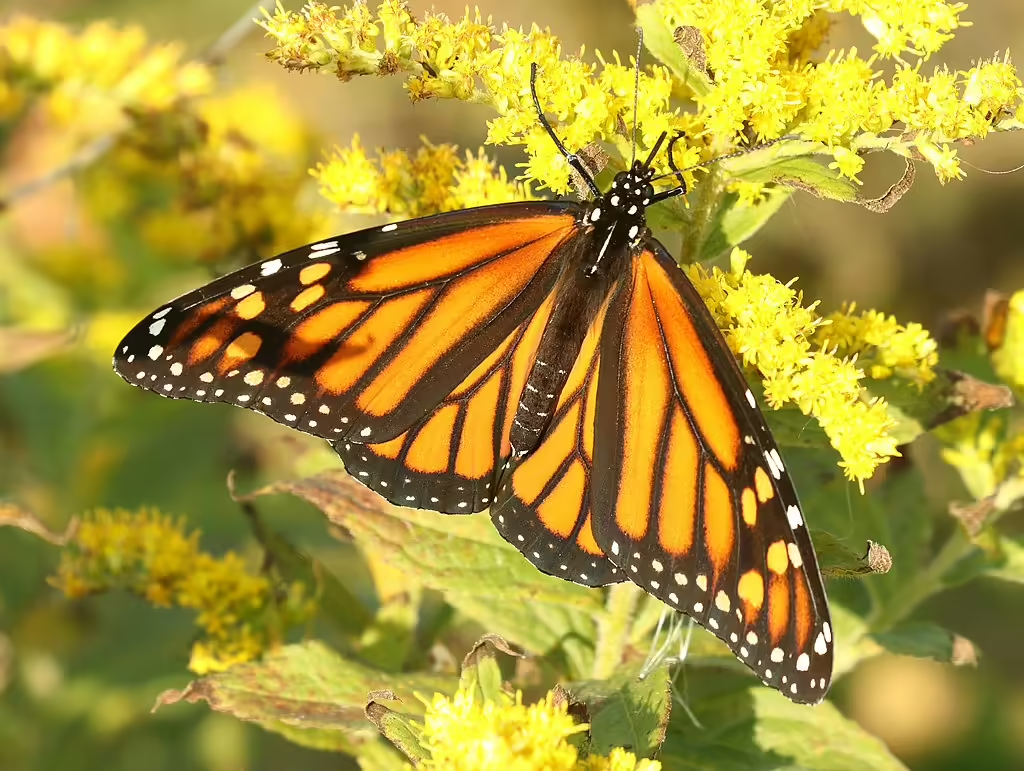
Hardiness
This goldenrod is hardy in zones (3) 5a to 9b. If your garden is within these zones, you can grow it even if you are not within the native range and have the right soil and moisture conditions. In some cases, if you are a distance from the native range, it may not have any host species, if they are not in the same area. However, Solidago canadensis, is such a good nectar plant, it is likely there will be an insect that will use it.
Cultivars
- ‘Baby Gold’ : a compact variety of Solidago canadensis
- ‘Goldkind’ : also golden baby goldenrod, a short goldenrod (505 outside)
- ‘Little Miss Sunshine’ : only grows to 12 inches (called dwarf goldenrod)
- ‘Little Lemon’ : a short, light yellow variety
Optimal Conditions
This goldenrod requires places with full sun or at most slight partial shade and soils that are dry to mesic and well-drained. However, the NRCS also states that it can be found in moist soil. Root-rot can occur if there is too much moisture. Aphids and mildew of the leaves have been noted as problem in some plants (gardenia.net).
Interesting to Know
The states of Kentucky and Nebraska honor the goldenrod (Solidago spp.) as their state flowers (Wikipedia).
References
- Abhilasha, Dipti, Naira Quintana, Jorge Vivanco, and Jasmin Joshi. 2008. Do allelopathic compounds in invasive Solidago canadensisis s.l. restrain the native European flora? Journal of Ecology 96(5): 993-1001.
- Cappuccino, Naomi and Peter W. Price. 1995. Population Dynamics: New Approaches and Synthesis. Elsevier Inc. Academic Press. 429 pp.
- Cashatt, Everett D. 1972. Notes on the Balanotes (Meyrick) Group of Oidaematophorus Wallengren with Description of a New Species (Pterophoridae). Journal of the Lepidopterists’ Society 26(1) 1-13.
- Nesom, Guy. 1993. Taxonomic infrastructure of Solidago and Oligoneuron (Asteraceae: Astereae) and observations on their phylogenetic position. Phytologia 75: 1-44.
- Philips, T. Keith and Courtney D. Smith. 1998. The Biology and Hosts of Procecidochares atra (Diptera: Tephritidae): Evidence for Cryptic Species? Entomology News 109(3): 159-164.
- Preedy, Victor R. and Ronald R. Watson. 2020. The Mediterranean Diet: An Evidence-based Approach. Elsevier Inc. Academic Press. 588 pp.
- Watson, Ronald R. and Victor R. Preedy. 2013. Bioactive Food as Dietary Interventions for Diabetes. Elsevier Inc. Academic Press. 633 pp.
- Weakley, A.S. and Southeastern Flora Team. 2022. Flora of the Southeastern United States. University of North Carolina Herbarium, North Carolina Botanical Garden.
